
views
Finding Learning Resources

Use language learning apps to brush up your vocabulary and grammar. While you probably won't become fluent using language learning apps, they can help you master some of the basics. These apps can beef up your vocabulary, help you review basic grammar, or teach you useful phrases. A few popular options include: Duolingo Memrise Busuu Beelinguapp

Sign up for a class at your local college or university. One of the easiest ways to start learning a language is to take a class. If you're in college, look at the course catalog and see if Russian is offered. Even if you're not currently enrolled in a college or university, you may be able to sign up for a Russian class at a school in your area. Tip: If you prefer one-on-one instruction, look into working with a private tutor. Do a search online for “Russian tutor near me.” You may be able to find someone who can work with you either in person or online! For example, many community colleges in the United States offer continuing education language classes that are open to anyone. Some universities also offer online language courses. You can check individual schools' online programs or find a variety of courses through platforms like Coursera and edX.

Try a language-learning book or program if you're a self-guided learner. If you don't need the structure and guidance offered by a class, then you might find it helpful to use a language-learning book or software. For example, you might try Rosetta Stone's Learn Russian software, or purchase a book like Beginner's Russian by Anna Kudyma, Frank Miller, et al. Many language learning books and software packages include a variety of supplementary media to help you learn the language, such as recordings, videos, and interactive online quizzes and workbooks.

Search for online resources to get additional help. There are numerous online resources for people who are interested in learning Russian, and many of them are free. For example, you can find introductory lessons on Russian grammar, vocabulary, pronunciation, and more on websites like Russianlessons.net or Russianforeveryone.com. If you're more of an audio-visual learner, YouTube offers a wide variety of videos for helping you learn Russian.

Find a fluent Russian speaker who can practice with you. Finding a language exchange partner is a great way to refine your skills and apply what you've learned. If you don't know any native Russian speakers, try searching for Russian penpals online or joining a Russian language forum. Some apps, like HelloTalk, Tandem, and Speaky, can help you connect with native speakers of a variety of languages. Depending on the app, you may have the ability to communicate via text alone or through voice and video calls as well. Websites like Mylanguageexchange.com are also a great way to connect with language-learning partners.
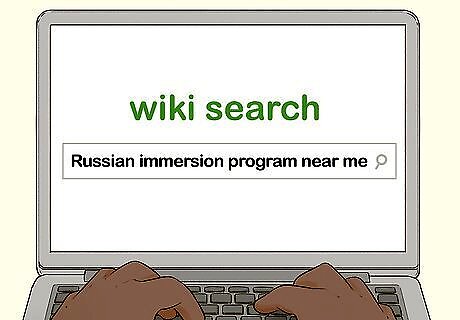
Look into immersion programs if you want to become fluent. If you're serious about becoming fluent in Russian, an immersion program may be your best bet. Immersion-style learning can help you learn the language on a deeper level and retain it longer than other approaches, even if you go for a while without using the language afterwards. In an immersion program, you plunge right into learning the language by actively using it. Instead of being introduced to various linguistic concepts gradually through instruction in your first language, you will receive most or all of your instruction in Russian. While some immersion programs involve going abroad, you may also be able to find immersion classes or schools in your area. Do a search using terms like “Russian immersion program near me.”
Mastering Basic Vocabulary and Grammar

Learn some common words and phrases. As you're just beginning to learn Russian, it can be useful to get some common vocabulary and phrases under your belt. Focus on words or expressions that are likely to come up in everyday conversation. You can use these to help break the ice when you converse with your teachers, classmates, language exchange partners, or native speakers. For example: “Hello” is “Здравствуйте” (Zdravstvujte). “Goodbye” is “До свидания” (Do svidanija). To introduce yourself, say, “Меня зовут . . .” (“My name is . . .”). For example, “Меня зовут Джэнайфр” (“My name is Jennifer”). You can also learn words and phrases that might be useful in specific contexts. For example, if you're traveling to Russia by air, it's helpful to master phrases like “Где можно получить багаж?” (“Where can I get my luggage?”).
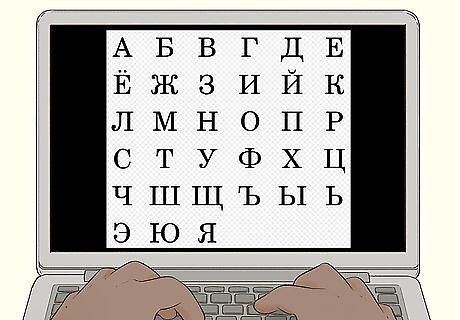
Familiarize yourself with the Russian alphabet. Russian is written in an alphabet called Cyrillic, which is quite different from the Latin alphabet used to write English and many other European languages. If you're not familiar with the Cyrillic alphabet, you'll have to learn it in order to read and write Russian. You can find the Cyrillic alphabet online or in any Russian textbook or language learning program. Most of the Cyrillic letters correspond roughly to the letters in the Latin alphabet, but not all of them have exact matches. For example, the Cyrillic letter В, в looks like a Latin B, but is pronounced like the English V as in “vet.” The Cyrillic letter Щ, щ has no Latin equivalent. It is pronounced like 2 “sh” sounds together, as in “wash shirts.”

Work on your pronunciation. Russian pronunciation is often a challenge for non-native speakers to master. Read up on Russian pronunciation in a textbook or other language learning guide, and listen to people speaking Russian either in person or in recordings so that you understand how the different sounds are pronounced. Keep in mind some of the following rules: Most Russian consonants come in either a “plain” or “palatalized” form. In general, the palatalized sound is much like the plain form except that it sounds as though it has a “y” sound after it. To understand this, think of the difference between the way the combination of “p” and “oo/u” is pronounced in the English words “poor” versus “pure.” You can tell whether a consonant is pronounced in its plain or palatalized form by looking at the form of the vowel that comes after it. For example, мэ is plain (pronounced like “meh”), while ме is palatalized (pronounced “myeh”).
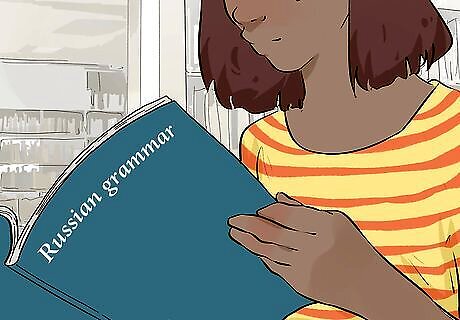
Study the basics of grammar. Much like English, Russian words can be divided up into a variety of different types or “parts of speech.” These include nouns, verbs, adjectives, adverbs, prepositions, and pronouns. However, these parts of speech may behave in ways that are quite different from what you are used to. You'll need to study and memorize the rules for understanding how the different parts of speech operate in Russian.Did you know? Russian nouns have 3 different genders: masculine, feminine, and neuter (genderless). This is something that's hard for English speakers to get used to, but English has a few gendered nouns as well—think of “actor” and “actress,” for example. For example, English nouns change form slightly depending on whether they are singular or plural (e.g., “child, children” or “cat, cats”). Russian nouns have a much wider variety of forms depending on factors like gender, number, and case. Most Russian words are built on “roots,” the meaning of which can be changed by adding various prefixes and suffixes. For example, the root лёг forms the core of verbs like положить (“put” or “lay,” as in “lay something down”) and лежать (“lie down”).
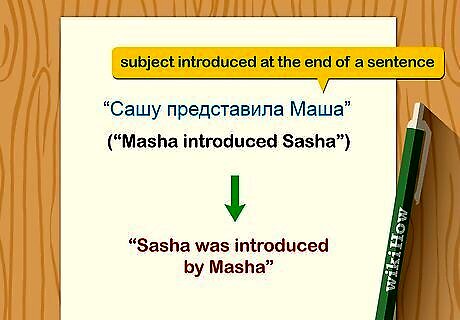
Master the different sentence structures. Most English sentences need a subject (typically a noun or a pronoun) and a verb at minimum in order to be grammatically correct. However, Russian sentences can be constructed without any kind of noun or pronoun subject. For example, to say “It is cold,” you would say “Холодно.” In English, the subject is “It.” In Russian, the subject is expressed through the form of the verb to create a complete sentence. Word order can also differ between Russian and English. For example, in Russian, the subject may be introduced at the end of a sentence rather than at the beginning. You would translate this structure as a passive sentence in English, even though it is technically active. For example, “Сашу представила Маша” literally means “Masha introduced Sasha,” but the subject (“Masha”) is at the end in order to emphasize to the listener that this is new information (e.g., in response to the question “Who introduced Sasha?”). You could get the general sense by translating it as “Sasha was introduced by Masha.”

Set aside a specific time to study each day. The best way to learn is to be consistent. If you're taking a formal class or working with a tutor, you'll probably already have a set class schedule a few days a week. To really reinforce what you're learning, though, it's important to also study on your own. Set aside some time every day—for example, 1 hour in the evening—to review vocabulary, grammar, or whatever you are currently working on. Even taking 15 minutes every day to quiz yourself on a vocabulary list or some verb forms can be helpful! Some language learning experts say that it takes a total of 10,000 hours of study and practice to become fluent in a new language. However, the amount of time you need to spend studying Russian depends on your schedule, your individual learning style, and the level of fluency you want to achieve.
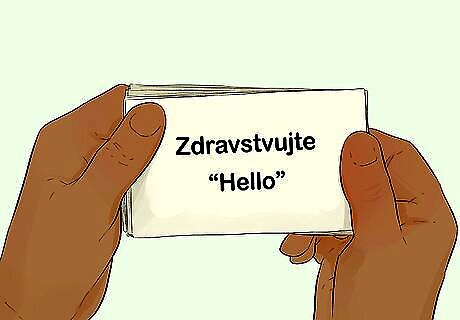
Quiz yourself to retain your knowledge better. Testing yourself is not only a great way to review the material, but it can also help you pinpoint areas where you need to improve your knowledge and understanding. If you're using a textbook or language learning program that includes quizzes or knowledge checks, take advantage of those. You can also use flashcards or ask a friend to test you. For example, you might create flashcards with the different noun cases and review those once a day for a while until you get them down.















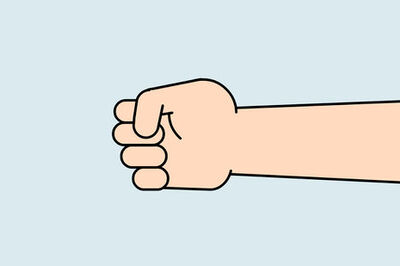


Comments
0 comment